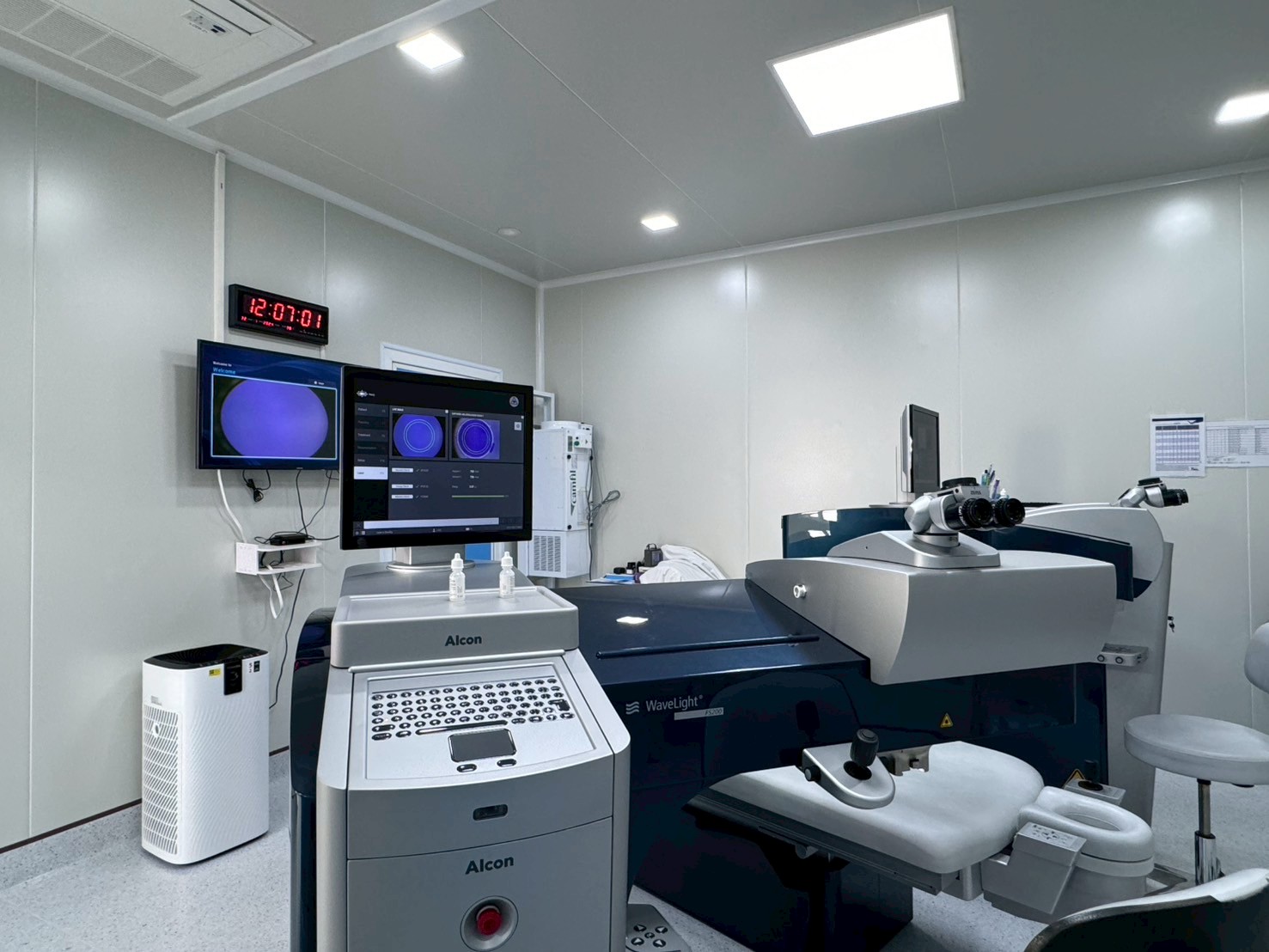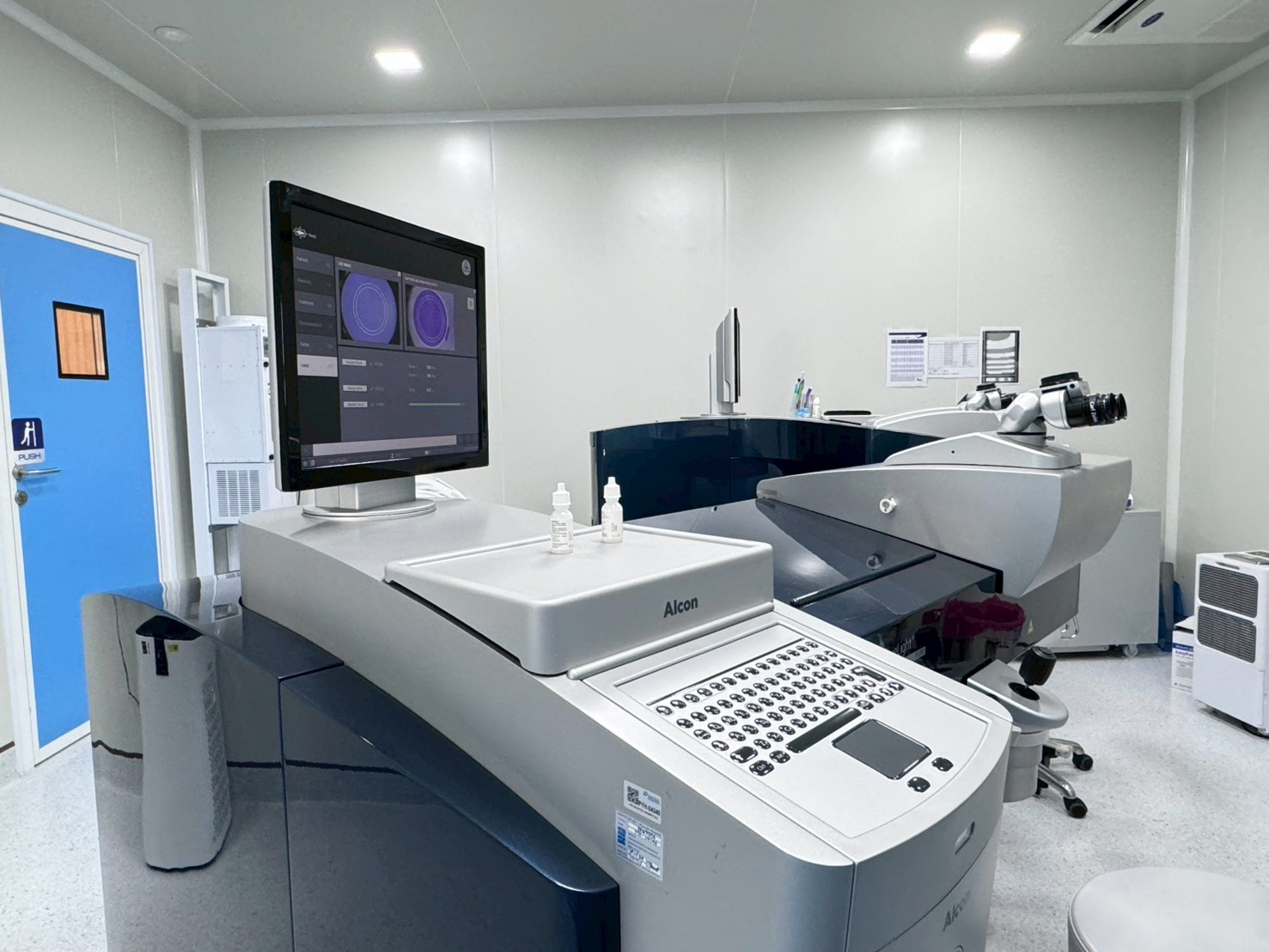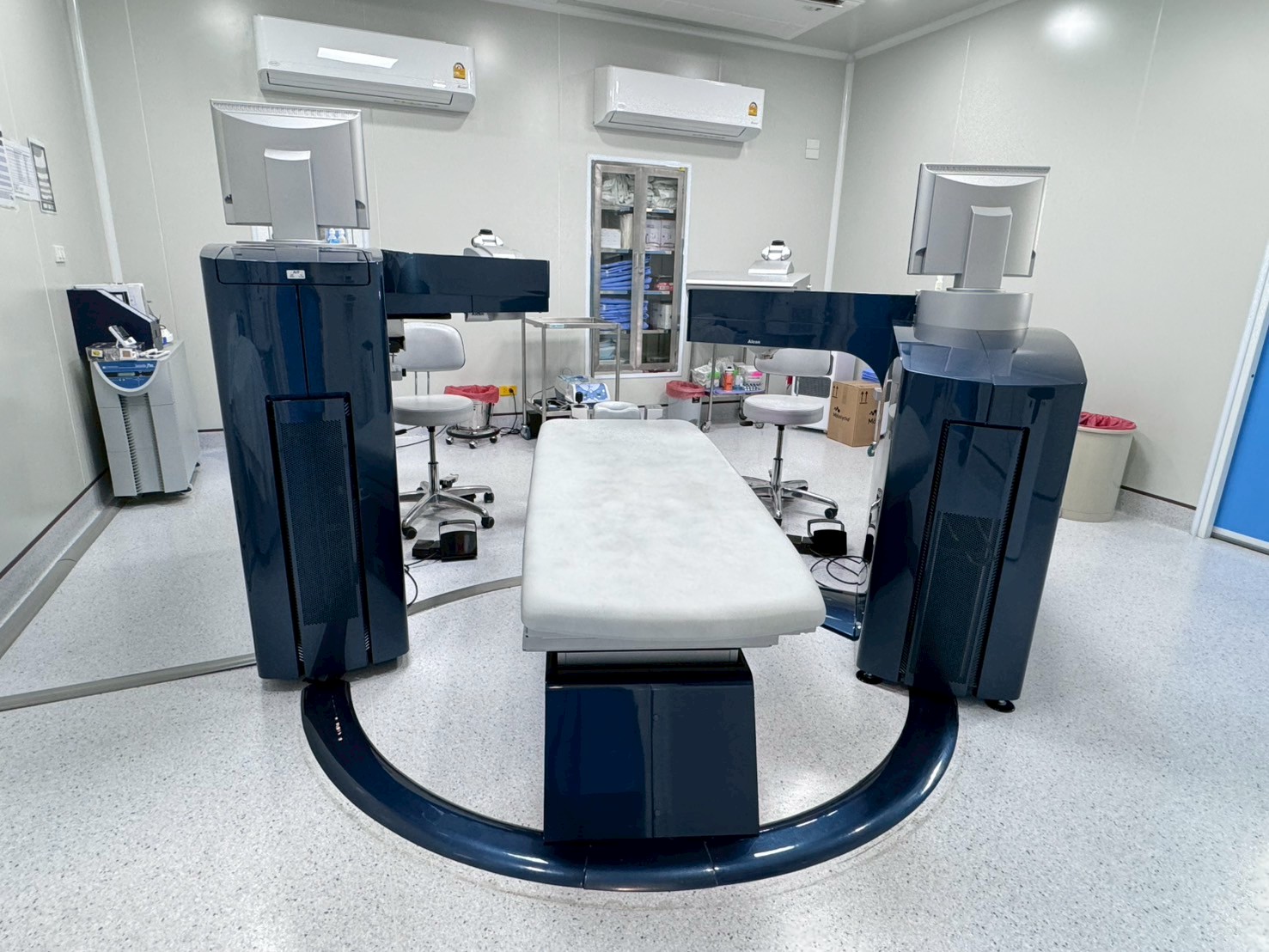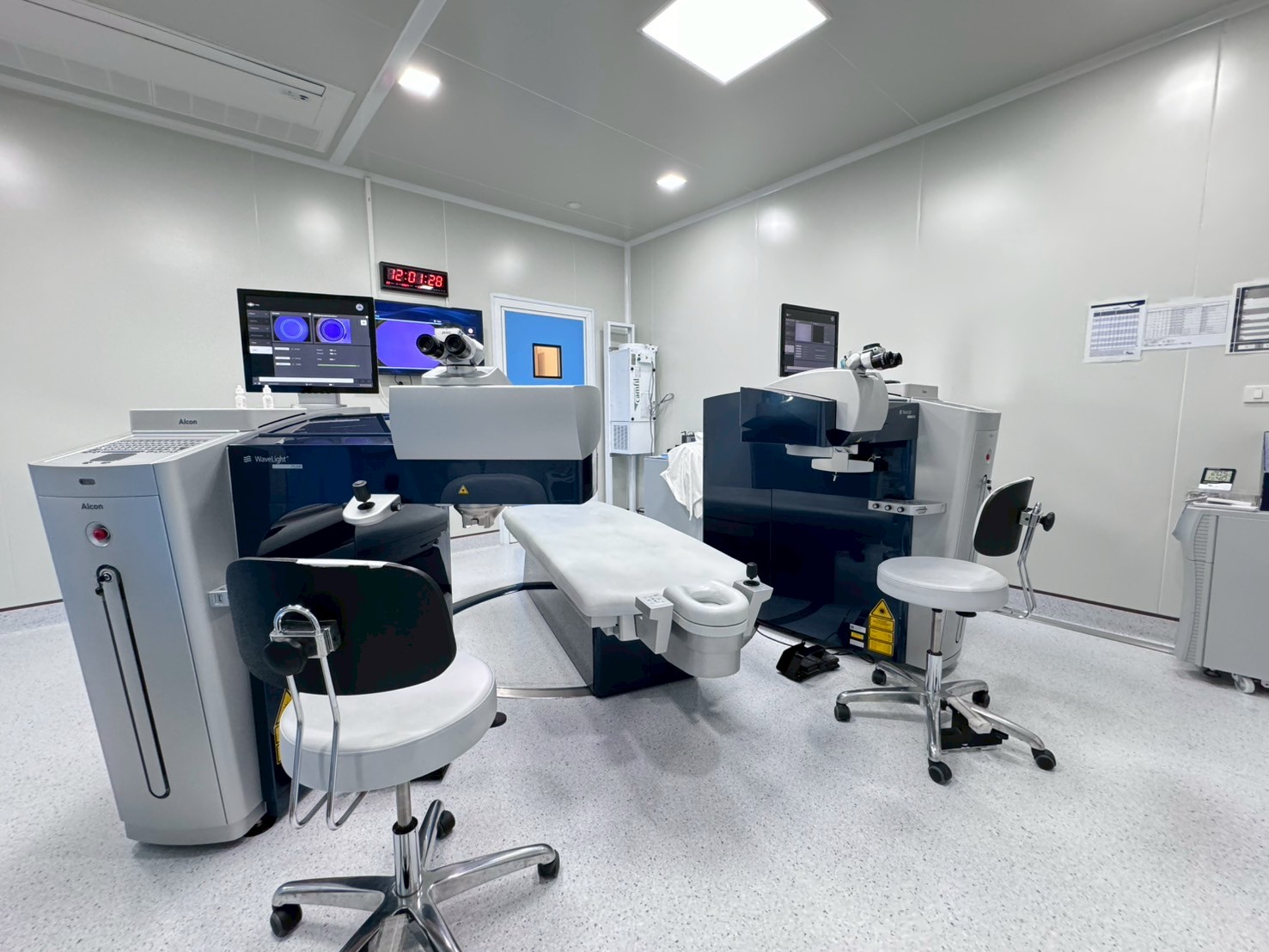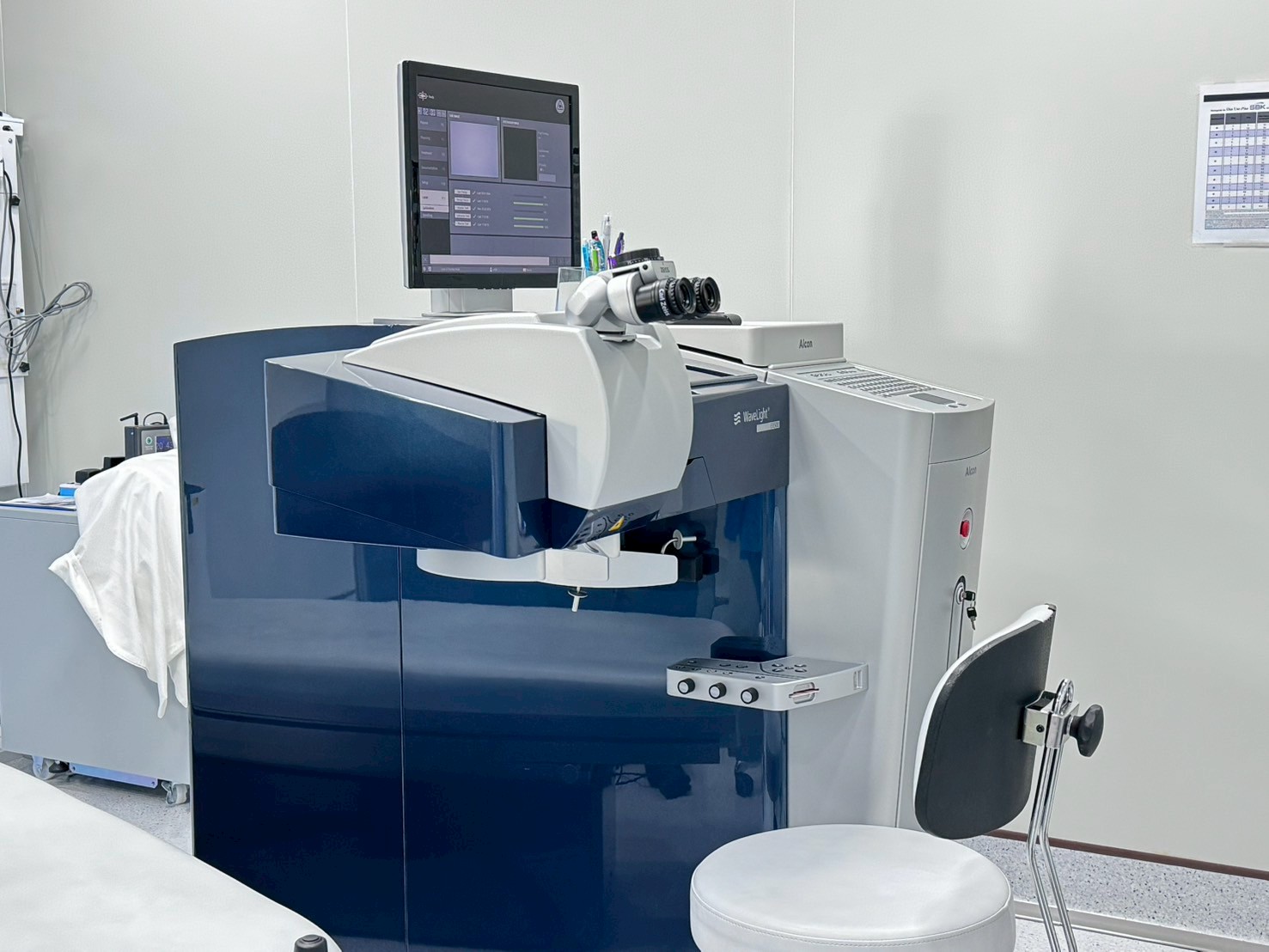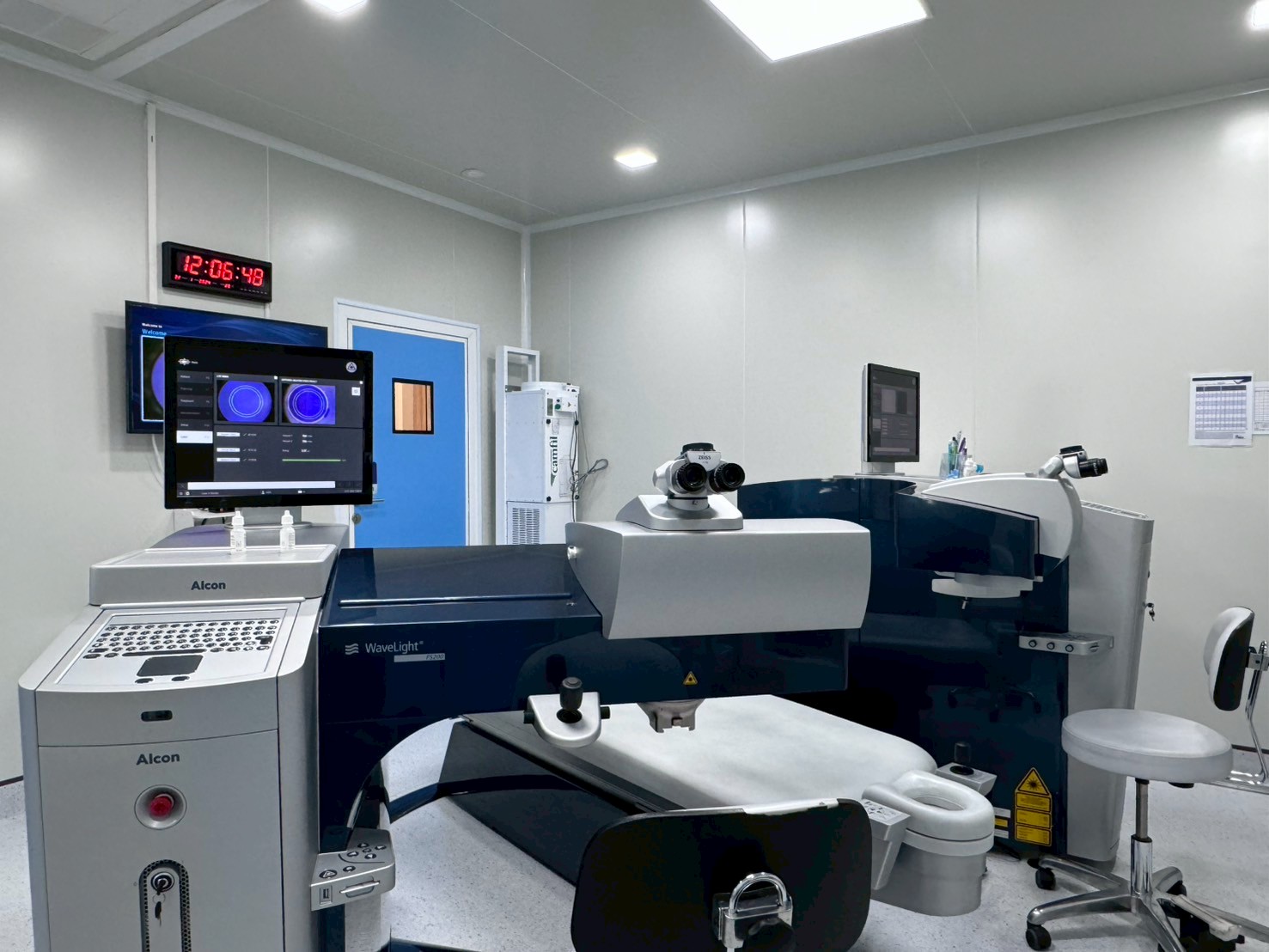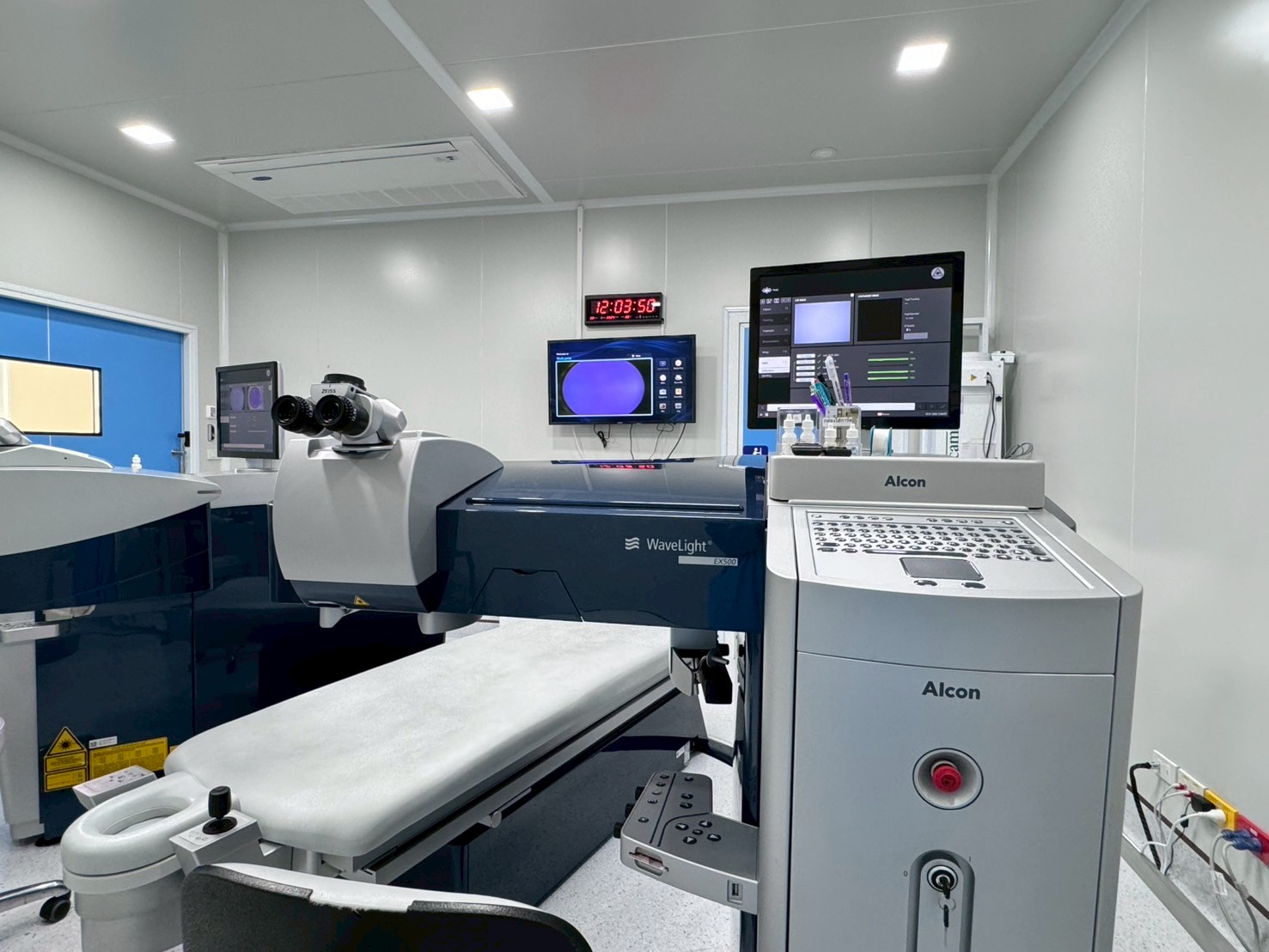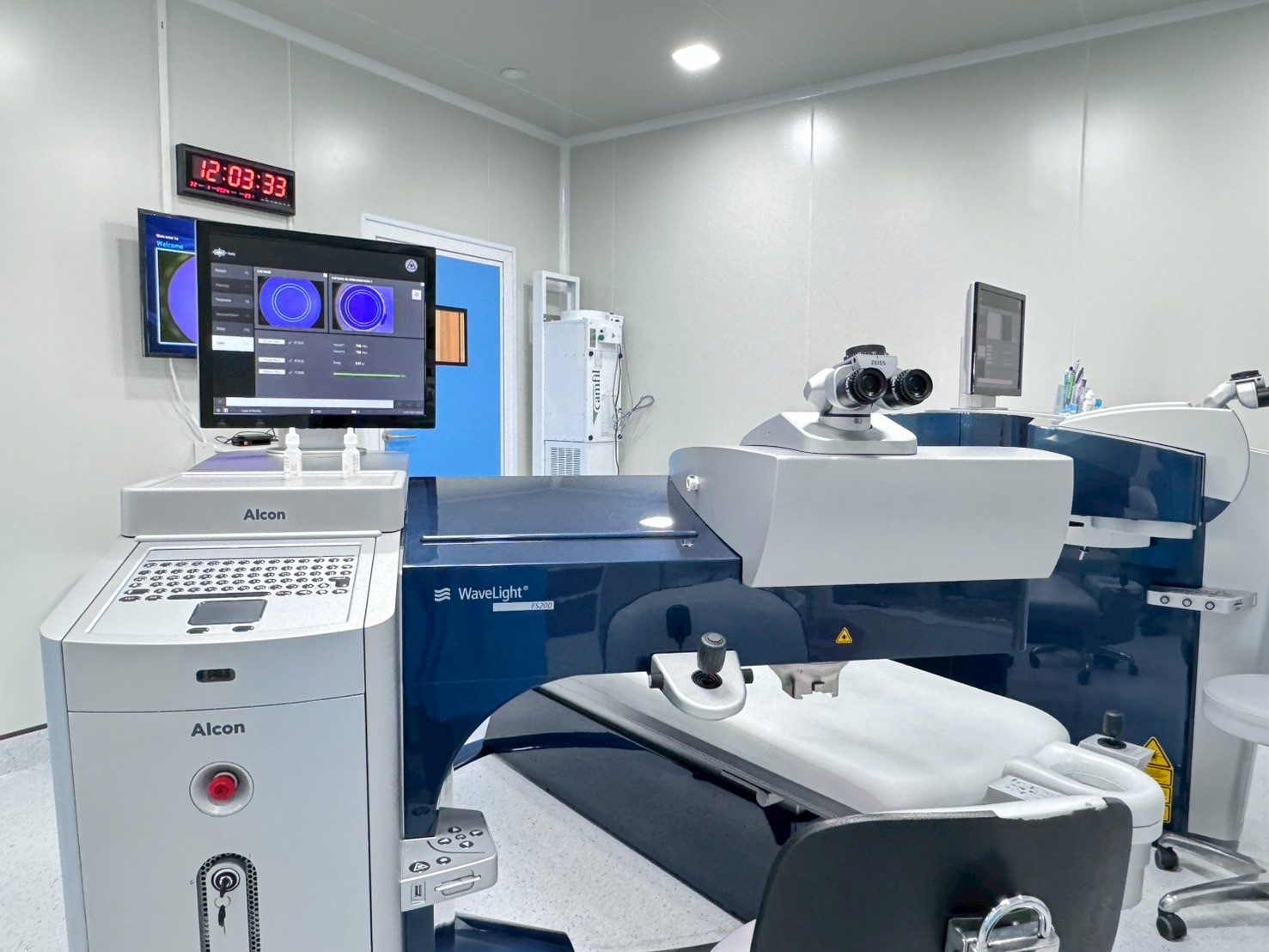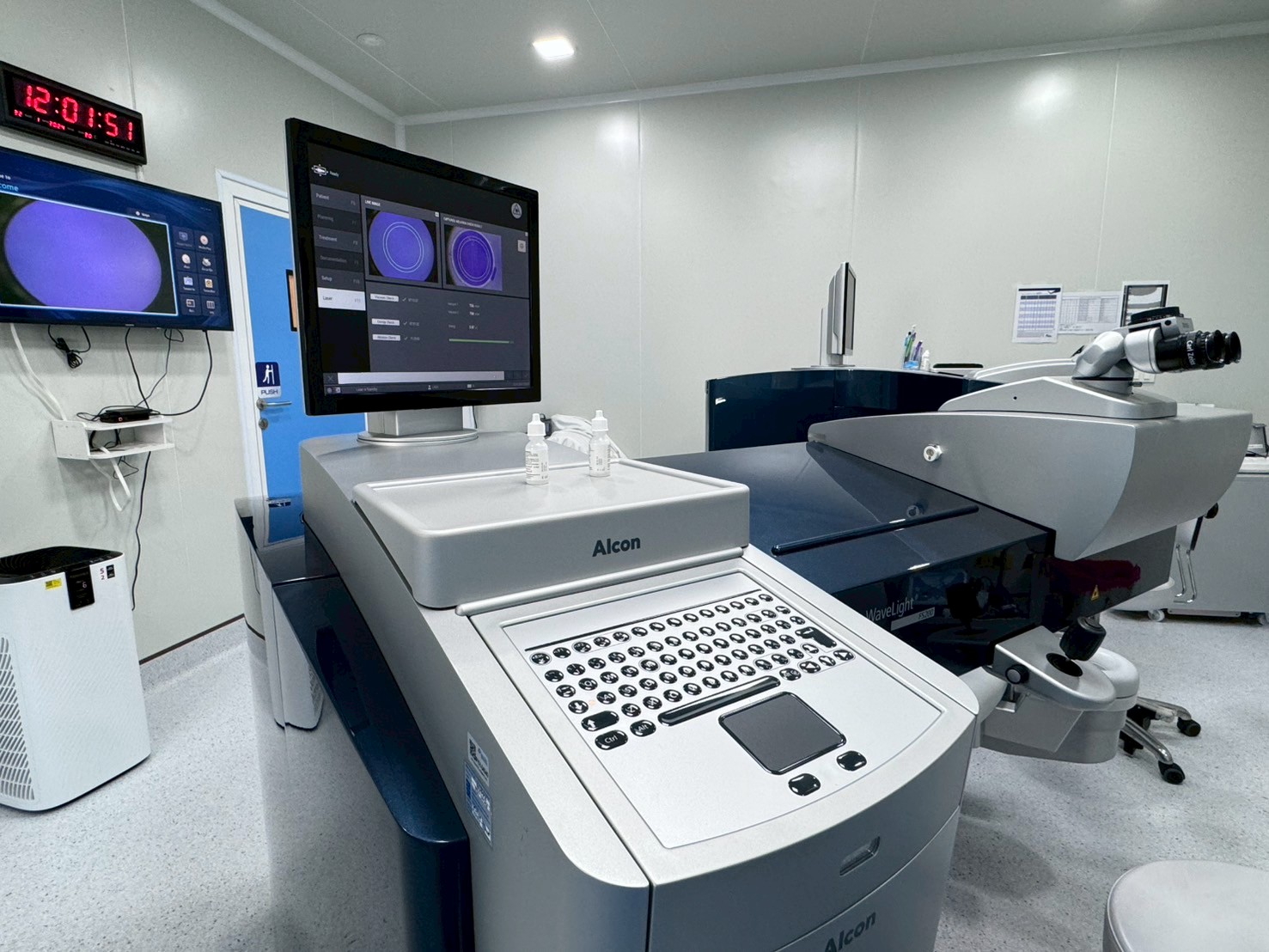An alternative choice to restore brightness to your eyes through a comprehensive and attentive pre-LASIK evaluation.
Conducted by highly skilled ophthalmologists with extensive experience, supported by state-of-the-art equipment and technology that meets international standards —all specifically designed for the diagnosis and treatment of eye conditions.
Helping you break free from the frames —of glasses, of limited vision, of your old way of life— and step confidently into a new world with clarity and grace.
WHAT IS LASIK
LASIK (Laser In Situ Keratomileusis) is a surgical procedure to correct refractive vision problems, including nearsightedness, farsightedness, and astigmatism, by using a laser called an Excimer Laser to reshape the curvature of the cornea.

(Myopia)
It is a common vision abnormality in which distant objects cannot be seen clearly, while nearby objects can be seen clearly. The cause may be due to the eyeball being longer than normal or the cornea being too curved.

(Hyperopia)
Farsightedness (Hyperopia) is a condition in which near vision is blurry, but distance vision is clear. In some cases, both near and distant vision may be blurry. It is caused by the cornea being too flat.

(Presbyopia)
Presbyopia, or age-related farsightedness, is a condition in which near vision becomes blurry. It is caused by the deterioration of the eye muscles and the hardening of the eye's lens, commonly occurring in people aged 40 and older.

(Astigmatism)
Astigmatism is a condition in which there is more than one focal point in vision, causing blurred or double vision. LASIK for astigmatism helps reshape the cornea so that light is properly focused.
TYPES OF LASIK PROCEDURES

Femtosecond LASIK (Femto-LASIK)
Femto-LASIK is a bladeless LASIK procedure that treats nearsightedness, astigmatism, and congenital farsightedness by using a laser to separate the corneal layers instead of a blade, followed by reshaping the cornea with another laser. It is highly safe and precise, allowing for a quick recovery of normal vision.

Sub-Bowman’s Keratomileusis (SBK) LASIK
SBK LASIK is a method used to treat nearsightedness, astigmatism, and congenital farsightedness by using a Microkeratome blade to separate the corneal layers, followed by reshaping the cornea with an Excimer Laser to correct refractive errors. After the procedure, it typically results in less dry eye compared to traditional LASIK.
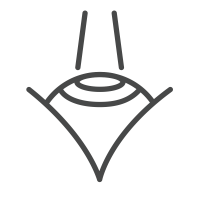
Transepithelial Photorefractive Keratectomy (TransPRK)
TransPRK is a vision correction surgery that does not require creating a corneal flap. It involves using a laser to remove the outer layer of the cornea, followed by reshaping the corneal surface with another laser to correct refractive errors. This method involves no direct contact with the eye and is suitable for those with insufficient corneal thickness for LASIK or those in special professions such as military personnel, police officers, pilots, or individuals concerned about the corneal flap. After the procedure, patients may experience eye discomfort, tearing, and irritation for about 3–5 days, with vision gradually improving over 1–4 weeks.
TECHNOLOGY
USED
Age 18 or older with stable vision for at least one year
No corneal diseases such as keratoconus or severe dry eye, and no other eye conditions like retinal degeneration, nor systemic diseases that impair wound healing
(e.g., SLE, severe dry eye with dry mouth [Sjögren’s], or other immune-compromising disorders)
Not currently pregnant or breastfeeding
Thorough understanding of the LASIK procedure and realistic expectations
PREPARATION BEFORE UNDERGOING LASIK TREATMENT
- Stop wearing soft contact lenses for at least 5 days, and hard or rigid–gas-permeable lenses for at least 14 days before the evaluation.
- On surgery day, shower and wash your hair; do not wear makeup, spray products, roll-on deodorant, or perfume.
- Wear a front-button shirt or clothing that can be removed easily to simplify changing after the procedure.
- If you take any regular medications, consult your doctor at the evaluation visit about whether you should stop any of them.
- Avoid alcoholic drinks before the surgery.
- Do not drive yourself to the evaluation or on surgery day, as pupil dilation during the exam will blur vision for 4–6 hours.
- Discontinue acne medications at least one month before the evaluation and surgery, because they can cause dry eyes and affect the accuracy of the eye measurements.
- Rest your eyes for the first 24 hours after surgery
- Avoid getting water or foreign objects in your eyes during the first 7 days
- Refrain from exercising for 7 days after the procedure
- Avoid applying makeup around the eyes for 7 days after the procedure
- Wear eye shields while sleeping for 7 days after the procedure to prevent accidental eye rubbing
- Get adequate rest
- Use eye drops as prescribed by your doctor
- Wear sunglasses outdoors for about 1–4 weeks
1 - 2 DAYS
Femto & SBK
5 - 7 DAYS
TransPRK
Frequently Asked Questions
Normally, LASIK can correct nearsightedness plus astigmatism up to 1,200 D, provided the cornea is thick enough for the correction and there are no contraindications to the procedure.
If you have only presbyopia, LASIK is generally not recommended, but if presbyopia is combined with nearsightedness or astigmatism, the following refractive corrections are recommended:
- Completely correct the nearsightedness, called full correction. After the procedure, distance vision will be clear, but you will need reading glasses for near tasks.
- Leaving a slight amount of nearsightedness in one eye, called monovision. After the procedure, distance and near vision will be reasonably good, though not perfectly sharp, reducing dependence on reading glasses for 3–5 years. However, the prescription choice depends on individual preference, so an evaluation and trial with lenses is recommended before surgery.
For individuals under 18, doctors generally do not recommend LASIK because the prescription may still be unstable. The exception is those who need the procedure to qualify for military or police entrance exams; they may be evaluated and undergo LASIK.
- If you undergo Femto or SBK LASIK, take 1–2 days off work.
- If you undergo Trans PRK, take 5–7 days off work.
After the procedure, avoid exposing your eyes to smoke for 7 days. Therefore, steer clear of smoky foods for the time being—unless you order them to eat at home without grilling yourself, in which case you may eat as usual.
It is recommended to undergo a thorough evaluation, which involves several steps: measuring your prescription, assessing corneal thickness and curvature, and dilating the pupils for a detailed eye health check. Only then can the doctor determine the most suitable method to correct your vision.
Because every step of the evaluation is carried out in detail to ensure accuracy and precision, leading to good postoperative results.
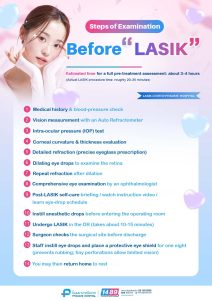
LASIK is not recommended during pregnancy or while breastfeeding, unless you are breastfeeding, your menstrual cycle has returned to normal, and you can pump and discard breast milk for the first 7 days after the procedure (because medicated eye drops are used); in that case, LASIK can be performed.
After LASIK surgery, side effects can occur, but they are usually temporary. Over time, symptoms gradually improve and disappear on their own. Examples include initial eye irritation, seeing glare or halos at night or in low-light conditions, and dry eyes, which may persist for the first 3–6 months.
Available Doctors
Health Articles

LASIK Explained: What to Expect Before, During, and After Surgery
LASIK (Laser-Assisted In Situ Keratomileusis) is one of the most popular and effective procedures for correcting vision problems like nearsightedness, farsightedness, and astigmatism. But while its benefits are well-known, many people considering LASIK still wonder what the full experience actually looks like—from preparation to recovery. Before the Procedure: Planning and



